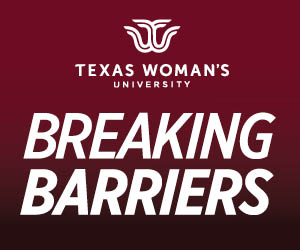District initiative to track students’ course programs
October 15, 2018
By Jubenal Aguilar
Editor-in-Chief
[email protected]
All Dallas County Community College District students in courses longer than five weeks will begin receiving at least one progress report during the term of each course. The initiative, called Student Progress Reporting, will allow all students to see their standing at predetermined times in their credit classes.
Student Progress Reporting is aimed to increase course completion and lower course withdrawals and course failure rates, Greg Morris, vice president of academic affairs at El Centro College, said.
Morris served as the chair of the Student Progress Report committee. He said the initiative originated from a survey in which students expressed their interests to the district. “A persistent concern of students was not knowing where they stood in a course throughout [the semester]. … I think that became the driving motivation to do Student Progress Reporting so that students have a better sense at certain intervals in the semester of how they are doing.”
Scott Sires, geographic information systems professor, said student retention was a key aspect of the new program. “Districtwide there needs to be a better retention of our students,” he said. “They need to understand where they are and get some help early on rather than later in the course when it may be too late.”
Through the new program, Sires said, all faculty are requested to grade everything up to a certain point and passes a grade to each student to let them know of their standing in the course up to that point. “The point of it is to communicate with all of our students – every student, every class,” Sires said.
In an email to The Courier, Jennifer Allen, a history professor, said if the initiative helps students, it is a good idea. “It should help students understand where they stand academically and also encourage professors to grade in a timely manner,” she said.
REPORTING PERIODS
Students in 15-week or longer courses will have two progress reports, Sires said. The first is given between the fifth and sixth weeks of the semester, and the second between the ninth and tenth weeks; about two weeks before the Nov. 15 drop date for fall 2018.
Students in courses between five and 14 weeks will receive one progress report near the midpoint of the course. Progress reports for classes that meet for less than four weeks will not be required.
Students Yasmine Garcia and Daisy Nira, said their professors brifly mentioned the Student Progress Reporting in their classes. Both received reports for each class they are enrolled in.
Garcia said she liked the idea because it can let her know where she stands in eacl class.
GRADING SCALES
Grades will be reported in one of two different scales – A-F letter grades, or S for satisfactory and U for unsatisfactory.
“One of the things that was important to us was to respect faculty autonomy as it relates to Student Progress Reporting because each faculty may manage their classroom somewhat differently,” Morris said.
Faculty will have full authority to choose which scale they use in each class, Morris said. They may elect to report grades using one or both scales for their courses.
Morris said instructors may also choose to report grades using a mix of both grade scales for a single class. This will allow faculty the flexibility to give firmer grades to students who are current with all assignments and an S to a student they are working with to improve in the class.
Bob Smith, instructional support manager, said he believes most instructors may opt to use S or U for the first reporting period and a letter grade for the second report.
An S or U grade now, he said, may be better suited in courses where not many assignments have been given to students in the first part of the semester. Likewise, a letter grade will give students a better understanding of their standing in a course further into the semester when more work has been completed.
Allen said recording grades to Student Progress Reporting has not negatively impacted her work or grading schedule. “It took about five minutes per class to record the grades in the progress report,” she said. “I think it is a benefit as a professor because I have a better idea where grades stand as the course progresses.”
Nira said sometimes students may be too busy to check for themselves
CHECK GRADES
Once an instructor has reported student grades, each student will receive an email from [email protected] notifying them to go to eConnect. There, students can check the My Student Progress Report link to see grades for each credit course.
“I check my email all the time for sales and stuff,” Nira said. “So them I’m like, ‘Uh, why did the school send me an email? Maybe I’ll think about opening it.’”
Sires said comments will be required only for students who are not in passing or satisfactory standings. The reporting system currently offers about six pre-written comments for students, but faculty may choose to write their own for each student.
Morris said the first goal of launching Student Progress Reporting was to have an effective way to get student feedback.
“There should be an expectation of everybody who is participating in this that this district, or each college, will examine the data we get from this,” Sires, who is also a data scientist, said. The collected data should help determine if the district is taking the right steps in ensuring students have the best experience possible.
The next phase will include data analysis input that will track the effectiveness of Student Progress Reporting and eventually include intervention mechanisms such as tutoring and advising resources to help struggling students.

